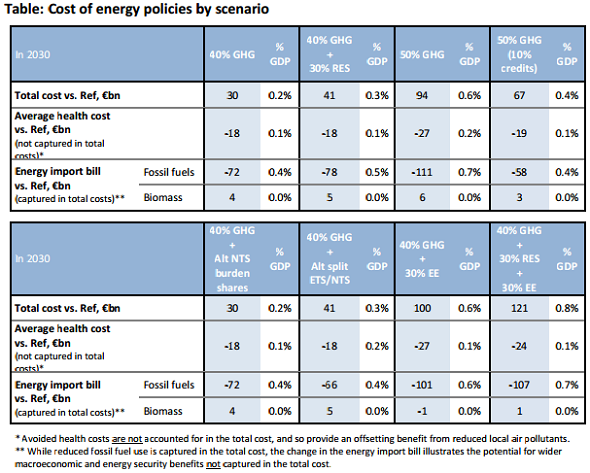Costs and Benefits to EU Member States of 2030 Climate and Energy Targets is based on analyses using the POLES-Enerdata model and presents an overview of the main European energy and climate policies: reduction of CO₂ emissions, development of renewable energies, and promotion of energy efficiency. The report looks forward to 2030 and beyond to evaluate possible targets and the goal of maintaining global temperature rise to 2°C. This publication was produced by Enerdata’s Global Energy Forecasting team, including the modelling and scenario analysis, within the framework of an external service contract to the UK’s Department of Energy and Climate Change.
This project looks ahead to 2030. To do this, scenarios were developed using the POLES-Enerdata model, a world energy-economy model that fully describes the energy system and associated GHG emissions. This report analyses the costs and benefits to all EU Member States under different scenarios of the level and type of EU targets defined within a 2030 climate and energy framework. Scenarios include progressively more stringent GHG targets in 2030 (40%, 50%, and 60% reductions compared to 1990), alternative assumptions on access to international credits (0%, 5% and 10% of 1990 emissions), the addition of RES burden shares by Member State, accelerated CCS commercial availability and reduced renewables learning rates. These are the sensitivities commissioned as part of this report; however, they are not a comprehensive range covering all possible outcomes that could arise in reality. What are the costs and benefits to Member States under different scenarios of the level and type of EU targets? The analysis assesses the benefits of different scenarios to improved air quality and health, diversity of energy supply, and reduced costs of meeting longer term emission reduction targets (notably the EU’s commitment to reduce emissions by 80-95% by 2050). Relying on more low-carbon, domestic, or diversified sources of energy can bring significant benefits not only for the environment, competitiveness and security of energy supply, but also in terms of economic growth, employment, regional development and innovation. This study quantifies some of these impacts on the energy system from changes induced via carbon pricing, and other measures, to reach different emissions reduction objectives.
The study introduces the policy setting for the EU 2030 framework and the scenario methodology used, provides overall EU28 and individual Member State results, and includes various graphs and tables of key findings.

 Energy and Climate Databases
Energy and Climate Databases Market Analysis
Market Analysis